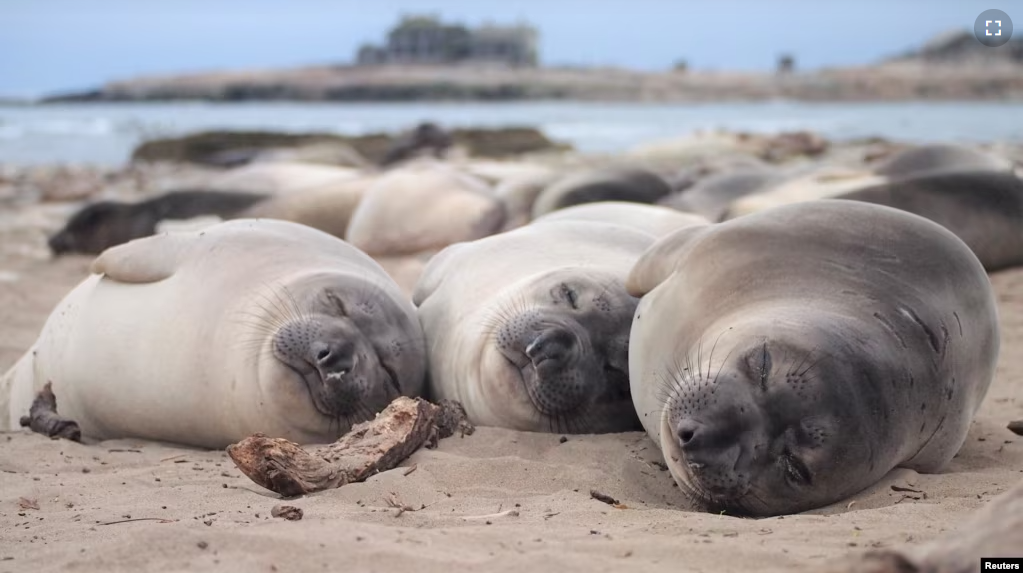Sleep is an important biological process for people and animals.
However, much remains unknown about the process.
Humans spend about one third of their lives sleeping. But some mammals, like the northern elephant seal, survive with much less sleep.
Researchers in a new study described the unusual sleep pattern of these ocean animals. They found that when these mammals go to feed on trips that can last seven months, they sleep just two hours. Those two hours of sleep are made up of short moments of rest lasting only 10 minutes each as they dive deep to avoid predators. The only other mammals known to get so little sleep are African elephants.
The seals’ sleep time during ocean trips is different from the 10 hours a day they spend sleeping on the coast during mating season at places like California’s Año Nuevo beach.
The researchers placed a head covering with sensors on the heads of the seals that they studied. The sensors recorded sleep signals created by the seals’ brains and heart rate. The sensors also recorded the animals’ location and depth beneath the sea.
The researchers studied female seals because they go out on long open-ocean trips while males feed in coastal waters.
During dives lasting about 30 minutes, the seals went into a deep sleep called slow-wave sleep while keeping a controlled downward movement. When they then experienced rapid-eye-movement (REM) sleep, a condition where voluntary movement while sleeping stops, the seals fell into a turning pattern. They sometimes ended up without movement on the seafloor.
Jessica Kendall-Bar of the University of California San Diego’s Scripps Institution of Oceanography is the lead writer of the study published this week in Science. She said, “Then, at the deepest point of their sleeping dive – up to 377 meters deep – they wake up and swim back to the surface.”
The northern elephant seal is the world’s second-largest seal. Only the southern elephant seal is bigger. Male northern elephant seals may reach four meters long and weigh up to 2,000 kilograms. Females reach about three meters in length and 590 kilograms.
The seals eat sea animals like fish and squid. Even with their large size, predators like sharks and killer whales are still a threat.
Terrie Williams is a scientist at the University of California at Santa Cruz who helped write the study. She said, “It is remarkable that a wild animal will fall into deep, paralytic REM sleep when there are predators on the hunt.” She added that the seals solve this problem by going into deep sleep in the deep parts of the oceans where predators usually do not hunt them.
Williams said the brain’s ability to control awakening the sleeping seals at a depth before they drown is also a discovery about how mammalian brains work. She commented on this saying that it shows the survival control of the seals’ brains.
I’m Gregory Stachel.
Will Dunham reported this story for Reuters. Gregory Stachel adapted it for VOA Learning English.
Editor’s Note: An earlier version of this story mispelled the name of the lead scientist. The scientist’s name is Jessica Kendall-Bar. We apologize for the error.
__________________________________________________________________
Words in This Story
mammal – n. a type of animal that feeds milk to its young and that usually has hair or fur covering most of its skin
pattern – n. the regular and repeated way in which something happens or is done
predator – n. an animal that lives by killing and eating other animals
location – n. a place or position
remarkable – adj. unusual or surprising
paralytic –adj. in a condition of being unable to move arms or legs
